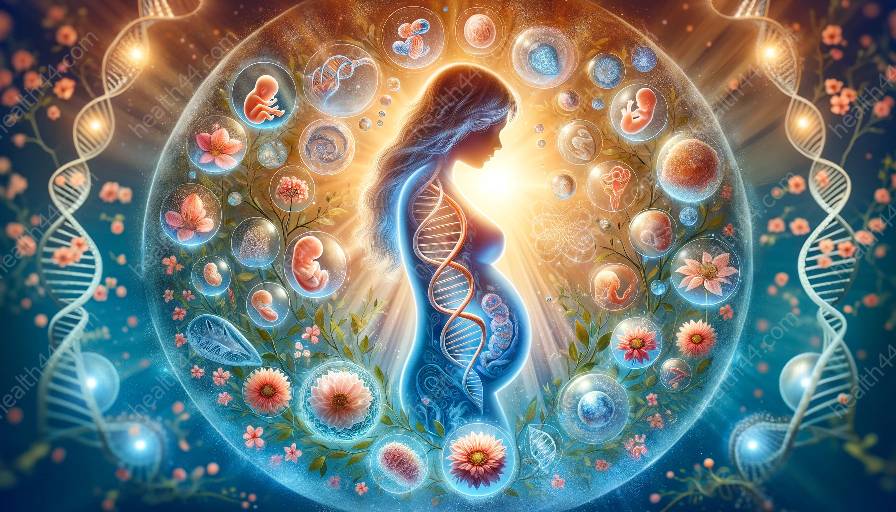Throughout pregnancy, fetal circulation undergoes significant developmental changes to support the growing needs of the developing fetus. Understanding these changes is crucial for assessing the well-being of the fetus and anticipating any potential prenatal complications.
1. Fetal Circulation in Early Pregnancy
During the early stages of pregnancy, the fetal circulatory system is still developing. The umbilical cord plays a crucial role in delivering oxygenated blood and nutrients to the fetus while removing waste products. At this stage, the fetal heart, although in its early developmental phase, pumps blood through the circulatory system to support the formation of essential organs and tissues.
2. Establishment of the Placental Circulation
As pregnancy progresses, the placenta becomes a vital organ for the exchange of gases, nutrients, and waste products between the maternal and fetal circulatory systems. The development of the placental circulation is instrumental in facilitating the transfer of oxygenated blood from the maternal circulation to the fetus, ensuring proper fetal growth and development.
3. Maturation of the Fetal Heart and Vasculature
Over the course of pregnancy, the fetal heart and blood vessels undergo intricate developmental changes. The heart grows in size and complexity, enabling it to handle the increasing demands for circulation. Simultaneously, the vasculature of the fetus undergoes remodeling and growth to accommodate the expanding fetal body and organ systems.
4. Changes in Oxygenation and Blood Flow
As the fetus matures, there are significant alterations in the oxygenation of blood and the distribution of blood flow within the fetal circulation. These changes are essential for meeting the oxygen and nutrient demands of the developing fetus and are dynamically regulated to adapt to the changing needs throughout different stages of gestation.
5. Adaptations for Birth and the Transition to Postnatal Circulation
Prior to birth, the fetal circulatory system prepares for the transition to postnatal life outside the womb. Key adaptations, such as closure of specific fetal shunts and changes in pulmonary circulation, are essential for ensuring a smooth transition to independent breathing and circulatory function.
Understanding the developmental changes in fetal circulation throughout pregnancy provides valuable insights into the intricate processes that support fetal development and prepares healthcare providers to identify and manage potential complications that may arise during this critical period.


